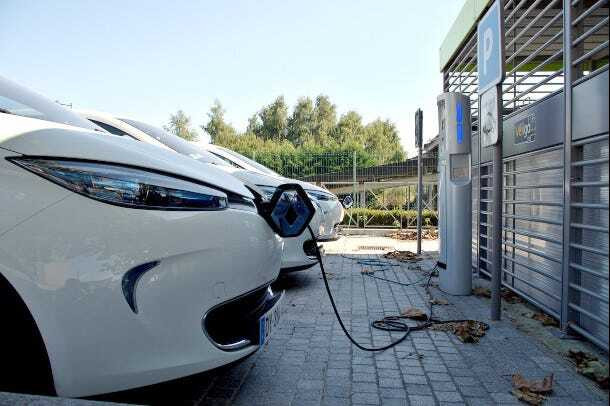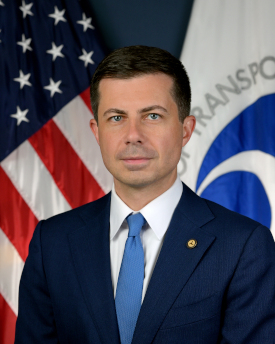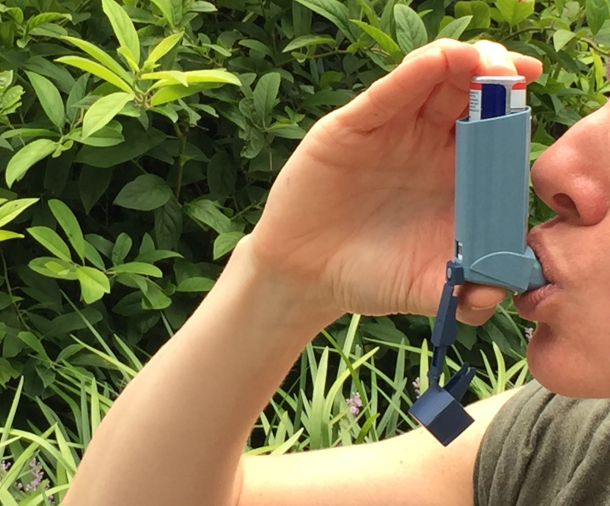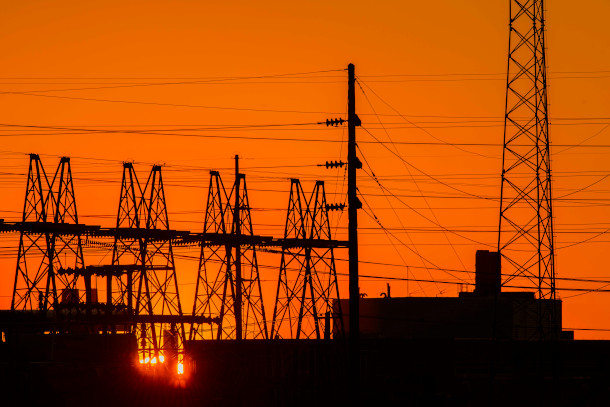Feds Power Up Electric Cars
Air Date: Week of January 19, 2024

President Biden has set a goal for the U.S. to increase from 170,000 to 500,000 EV charging stations by the end of this decade. (Photo: Stivabc, Pixabay.com)
The U.S. Department of Transportation recently granted more than $600 million to states and communities across the country to roll out new EV charging stations and tune up existing ones. Transportation Secretary Pete Buttigieg joins Host Jenni Doering to discuss the connections between EV charging access, environmental justice, and economic growth.
Transcript
BELTRAN: From PRX and the Jennifer and Ted Stanley Studios at the University of Massachusetts, Boston this is Living on Earth. I’m Paloma Beltran.
DOERING: And I’m Jenni Doering.
Demand for electric vehicles is rising but one major roadblock for Americans who’d like their next car to be an EV is where to “fill up”. Gas stations are everywhere, but not so much with EV chargers. So the federal government is stepping in to give EV charging a jumpstart with the help of funds allocated by the 2021 Bipartisan Infrastructure Law. The Department of Transportation recently issued hundreds of millions of dollars in grants to states and communities across the country to roll out new EV charging stations and tune up existing ones. Here with us to discuss the future of EV infrastructure is the U.S. Secretary of Transportation, Pete Buttigieg. Hello Mr. Secretary and welcome to Living on Earth!
BUTTIGIEG: Thank you for having me on.
DOERING: So why are EV charging stations important?
BUTTIGIEG: Well, to put it simplistically, they're important because you need them to keep your car going. Look, some Americans have a single-family home with a garage. They've got all the charging infrastructure they need because you have a plug in the wall, and it's that easy. But if you can't charge at home or at work, or if you're driving long distances every day, and even if you charge at home, you're gonna push the boundaries of your range, you need another option. And so we need to make sure that those chargers are there everywhere you need them. The same way that today, when you leave your house to go on a road trip, you know, there's gonna be a gas station when you need one. And that's not all going to happen on its own. There are some places where it's already profitable for companies to put in charging stations, and they already have. Other areas, we need to make sure that we invest so that it is easier for Americans to take advantage of the benefits of owning or using an EV.

US Secretary of Transportation Pete Buttigieg says he is committed to creating green transportation infrastructure that supports electric vehicles as well as clean public transportation. (Photo: Pete Buttigieg, U.S. Department of Transportation, public domain)
DOERING: Yeah, how many stations do we have across America now? And how many do we need?
BUTTIGIEG: So we definitely need more than we have. We've seen an increase of about 70% so far since President Biden took office in terms of the chargers that are out there. But we need to get to about half a million by the end of this decade. That's President Biden's goal. And in order to do that, we need to continue accelerating our investments. Last time I checked, we got about 166,000 chargers out there. So clearly a long way to go, which is why we're pushing so hard to get them out there on a more widespread basis. And to make sure they're there where they're needed, whether again, it's making sure every 50 miles or less on a road trip, you can find one on a highway, or if you're in a multifamily dwelling in a low income area in a city, that there's a charger there for you.
DOERING: And what about repairing and replacing existing charging stations? Why is this important?
BUTTIGIEG: So this is a problem that sounds new, we're still trying to get those chargers out there. But it's already becoming an issue, which is why we also have funding in the infrastructure package to make that first generation of chargers more reliable. If you think about it, you know, we've now got some charging infrastructure out there that's five, ten, even 15 years old. And like anything else in its first generation, there are growing pains, kinks, and not all of those were built to the same high standard that we're now requiring for these federally supported chargers going out across the country. So we're investing in the reliability and the repair of the chargers that are already out there through a separate round of grants, even as we're building those new charters that communities are putting in in every state plus Puerto Rico and DC, thanks to the funding that our administration is put out there.

The Department of Transportation worked with Native American communities to help address the unique challenges they face when making the switch to EVs. (Photo: Charles Watkins, Department of Energy, Flickr, public domain)
DOERING: So who's getting this first round of $623 million in grants for EV charging stations? And what went into choosing them?
BUTTIGIEG: So this is part of a bigger set of funds that are available through President Biden's infrastructure package. A lot of it went out to the States through formula, but we knew that we needed another program to fill in some of the gaps. That's where this CFI or charging and fueling infrastructure program comes in. We've made a number of grants around the country through this latest round. And they're going to everything from Cleveland, Ohio, where the Northeast Ohio community has come together with ideas on how to make sure that they're charging stations at community centers, all the way through to a truck oriented facility in New-Mexico, that's gonna help electrify the I-10 corridor for those heavier duty vehicles. It's all about finding the gaps, filling them in, and kickstarting this market, much the same way that almost a century ago, the US invested in airports around the country in a way that helped make sure that the network was strong enough for the aviation sector as a whole to take off in America.
DOERING: Now, how does this help advance environmental justice a priority for the Biden administration?
BUTTIGIEG: Well, a couple of things I would point to, and the lion's share of these funds are going to disadvantaged and historically excluded or overburdened areas. First of all, it's just making sure that everybody can afford to take advantage of the savings. So we're lowering the sticker price of EVs through the Inflation Reduction Act, and making sure the charges are out there. We got to make sure that this is not just a luxury item or rich person's game, that anybody can take advantage. That means making sure the chargers are literally physically in the neighborhoods where people live. The second thing that's very important in terms of environmental justice is health. Look, a lot of Americans live close to a highway or another facility or area where there's a lot of traffic. And that means there's a lot of pollution. And that means there's a lot of public health issues. We can systematically find, for example, how many neighborhoods with many Americans of color are more likely to have children with asthma, simply because of the particulates going into the air as a result of the traffic. Obviously, that changes when you have those cars running on electricity, ideally, renewable electricity. Now all of that means that these specific areas, neighborhoods, whether you're close to a bus depot, or whether you're close to a port or a highway interchange, are areas where it's safer, cleaner to live and where people are healthier, regardless of their racial or economic background.
DOERING: I understand a couple of the recipients in this round were Alaska Native and Native American tribes. Can you talk to me about those?
BUTTIGIEG: That's right. You know, we've had a lot of dialogue with tribal leaders, and we have been working to make sure that this infrastructure package delivers for Indian country, where there are some really unique needs — whether it's the work that we've been doing with the Southwest land based tribes that are expected to cover very long distances with very thin resources, or Alaska where many Native communities have truly unique needs — some places that aren't even accessible by road at all, where the only way you can get a car to a village, as happened to a mayor that I spoke to, is to have it brought in on a barge or an airplane. And then once it's there, it's no small matter to ship liquid fuel to that region. So if you have, for example, as I saw in an Alaska Native area, the beginnings of renewable electricity through wind, paired with access to EVs, that's going to make a big difference for cost of living, in addition to an environmental benefit.
DOERING: Talk to me about the overall strategy in what the federal government is doing to help build out this charging network. You know, what's strategic about the placement of these charging stations?

Since living in high-traffic areas increases the risk of developing asthma, the Biden Administration hopes that the switch to EVs will also be a public health win. (Photo: NIAID, Wikimedia Commons, CC BY 2.0)
BUTTIGIEG: So the big strategic picture is this: The automotive industry is going electric. We already see that happening. But certain things are not guaranteed. One will that happen fast enough to help us beat climate change? That means doing good work to make sure they're affordable, accessible, and that you can charge them when you need to. Two, is it going to happen in a way that reaches everybody? And that's where these funds are so important going into those places where the market is just not there yet. It will be, but it's not there yet. And people can't yet profitably put in these charging stations without public support. And three, is it going to be made in America? You know, part of what we require in this program is that if you're using our taxpayer dollars to purchase chargers, that there's a preference for these Made in USA chargers. The Buy America requirements are stronger than ever under President Biden because we know we're kickstarting an industry that's going to create good paying jobs. We are really burying the old false choice of climate versus jobs and discovering in so many ways, particularly in the auto industry, how doing the right thing for our climate is also creating a lot of manufacturing jobs. That's part of why we have the extraordinary manufacturing job creation underway under President Biden with a lot more where that came from. We've got to make sure that the U.S. leads the way in this next generation of the automotive revolution the same way that we did almost 100 years ago. And I take this personally coming from the industrial Midwest, seeing what happens if you fall out. Frankly, the Trump administration allowed China to build a big advantage in EVs. We're making sure America reclaims the initiative. And this is all part of that bigger strategic picture.
DOERING: Now, how up to the task of powering all this EV charging is our electrical grid?
BUTTIGIEG: The truth is we cannot run tomorrow's cars on today's grid. It's why the infrastructure package includes funding for improving the grid as well. You know, I remember these debates three years ago, we were trying to get this infrastructure law through where people said, "Well, you know, you're talking about the grid; you're talking about broadband. That's not infrastructure. Only roads are infrastructure." And what we realized is yes, of course, we're rebuilding our roads. That's a major category of what we're investing in. But it's just as important to have access to the internet as it is the interstate. And it's just as important to have the charging along those road networks as it is to make sure that those road networks are kept in good physical working order.
DOERING: And what about powering those charging stations?

Our current electrical grid is too outdated to support the number of EVs needed to make the switch away from gasoline-powered cars. Therefore, the Biden administration has dedicated funds to upgrading the grid as part of its infrastructure plan. (Photo: Randy Montoya, Flickr, CC BY-NC-ND 2.0)
BUTTIGIEG: So often one of the most difficult things in putting in an EV charging station isn't acquiring the charger or picking out the site. It's the utility work. We're working collaboratively with the Department of Energy in a way that I think sets a new high watermark, at least for our department. Matter of fact, already today. I've been in a meeting with Secretary Granholm. That's not unusual. We have a joint office for working on these things. Making sure, for example, that we team up on defining where these alternative fuel corridors need to be along the U.S. highway network so that the improvements to the grid and to electricity generation the Secretary Granholm's department is leading are compatible and making the most of the improvements to charging infrastructure and the road improvements that we're making out of the U.S. DOT.
DOERING: Now, how vulnerable are these plans for an EV charging network to being dismantled if there's a new administration?
BUTTIGIEG: Well, look, we have seen some hostility to EVs on Capitol Hill, and sometimes it's in the political crosshairs. But I really think that we can move this beyond partisan politics and emphasize that this is good policy. Look, the jobs that are being created, including in the industrial Midwest, in this EV revolution, they're not Republican jobs or Democratic jobs. They're American jobs, and they're benefiting American families. This is the future. There's no way to change that and nor should we want to any more than we would want to change from mobile phones back to rotary and landlines. The important thing is to recognize that get ahead of that and make sure that Americans benefit from that change sooner rather than later.
DOERING: Secretary Buttigieg, if you're given the chance to keep your job beyond this next year, what would you like to achieve when it comes to clean green transportation?
BUTTIGIEG: Well, look, we've made extraordinary progress, but we've got a long way to go. We've got to make sure that our transportation networks for tomorrow are as accessible and as sustainable as possible. This is a global effort. Lots of different countries are trying to do this. I want to make sure the U.S. is in the lead. And that's going to mean doubling down on our strategy of making EVs more affordable and easier to charge. It's going to mean the same thing on the transit side where we are purchasing low and no emission buses for transit authorities to use. It means creating more options for people so that you don't always have to drive, that you don't have to bring a ton of metal with you everywhere you're going, by making sure you have good alternatives with transit and rail, even as we make it safer and easier to drive an EV too. All of these things add up into cleaner air, healthier kids, and the kind of transportation network that we really need and deserve for the 21st century. And I'll be working on that every day I have this job no matter how many days that turns out to be.
DOERING: Pete Buttigieg is the U.S. Secretary of Transportation. Thank you so much.
BUTTIGIEG: Thank you. Thanks for having me on.
Links
Learn more about how the EV charging stations are run.
Read a detailed scientific explanation of the nuances of EV charging.
Find out if you’re eligible for a tax credit for purchasing an EV.
Living on Earth wants to hear from you!
Living on Earth
62 Calef Highway, Suite 212
Lee, NH 03861
Telephone: 617-287-4121
E-mail: comments@loe.org
Newsletter [Click here]
Donate to Living on Earth!
Living on Earth is an independent media program and relies entirely on contributions from listeners and institutions supporting public service. Please donate now to preserve an independent environmental voice.
NewsletterLiving on Earth offers a weekly delivery of the show's rundown to your mailbox. Sign up for our newsletter today!
 Sailors For The Sea: Be the change you want to sea.
Sailors For The Sea: Be the change you want to sea.
 The Grantham Foundation for the Protection of the Environment: Committed to protecting and improving the health of the global environment.
The Grantham Foundation for the Protection of the Environment: Committed to protecting and improving the health of the global environment.
 Contribute to Living on Earth and receive, as our gift to you, an archival print of one of Mark Seth Lender's extraordinary wildlife photographs. Follow the link to see Mark's current collection of photographs.
Contribute to Living on Earth and receive, as our gift to you, an archival print of one of Mark Seth Lender's extraordinary wildlife photographs. Follow the link to see Mark's current collection of photographs.
 Buy a signed copy of Mark Seth Lender's book Smeagull the Seagull & support Living on Earth
Buy a signed copy of Mark Seth Lender's book Smeagull the Seagull & support Living on Earth

